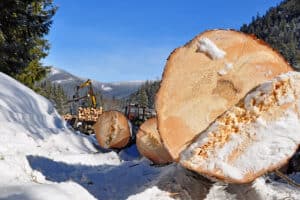Timberland investors depend on the health and sustainability of local wood markets to generate demand for – and ultimately cash flows from – the timber grown on their properties. These markets include traditional forest industry manufacturers – such as sawmills and pulp mills – as well as new markets including bioenergy plants. However, the wood bioenergy sector tells a range of stories to timberland owners. While wood pellet plants use off-the-shelf technologies and have existing, growing markets, wood biofuel plants have yet to prove their viability and reliability as wood markets.
Act I: Revisiting Previous Research
In May 2011, Forisk and the Schiamberg Group evaluated the viability of 36 wood biofuel projects in the United States. The study emphasized the unlikely and problematic development of the wood biofuels sector while singling out projects with drop-in fuels and specific technology types as having investment potential for investors. As of April 2013, 13 of the original 36 projects have been cancelled and 12 remain in the planning or construction stages. Four have been shut down. Since the 2011 study, ten new wood biofuel projects have been announced. The business plans and announcements associated with the new projects reinforce key findings from 2011 for investors interested in the biofuels sector. New projects emphasize feedstock flexibility, use less wood and focus on multiple, existing end markets including biodiesel and industrial chemicals.
Act II: New Findings
In the July 2013 edition of Wood Bioenergy US (WBUS), Brooks Mendell, Ashley Barfield and Amanda Lang studied the filings of publicly-traded biofuels stocks to draw insight regarding the prospects for wood biofuels markets. Their analysis reinforces previous conclusions that U.S. wood-based biofuel markets remain speculative. Larger public firms continue to marginalize their wood biofuel investments, while smaller firms continue to tack away from cellulosic ethanol and focus on product-ready markets.
The private sector has largely turned its back on wood biofuels as Wall Street stiff-armed the surviving, biofuel-dependent publicly-traded firms. For example, the stocks of two public firms tied to wood biofuels, KiOR and BlueFire Renewables, declined 62% and 96% from January 2011 through early 2013. Challenges associated with securing financing reinforce how wood biofuels projects depend on continued access to government financing and market protections, such as mandates.
Investors in wood-based biofuels must keep in mind how ethanol investments have generally lost their luster. John Eligon and Matthew Wald of The New York Times summarized the struggle of hundreds of corn ethanol plants built throughout the U.S. Corn Belt with government subsidies and mandates (“Days of Promise Fade for Ethanol”, 3/16/13). According to the article, “thousands of barrels of ethanol now sit in storage because there is not enough gasoline in the market to blend it with…”
Regardless of the quality and status of individual technologies and plants in development, analysis of public firms active in the wood biofuels sector confirms how they continue to face extreme economic and market challenges. First and foremost, ethanol-related production efforts operate in an over-supplied, low-demand market. The U.S. is flush with excess ethanol production capacity and, thanks to blending walls and other logistic limitations, is holding the bag for a product with few customers. This is economics 101. Second, high production costs for wood biofuels, even as firms show progress and improve yields, actually can look worse on a relative basis as the prices for alternative fuels, such as natural gas, decline. Through no fault of the U.S. biofuels sector, it remains subject to external benchmarks and exogenous forces that erode progress and diminish the attractiveness of wood biofuel investments. Third, time works against wood biofuel projects in the U.S. when evaluating wood feedstock strategies and alternatives. With an improving economy, demand for wood raw materials from traditional forest industry users such as building product manufacturers and pulp and paper producers is increasing. In addition, wood bioenergy projects with existing markets and ready technology, such as wood pellet producers, are increasing production and investment in new capacity. All of these factors push potential wood biofuels projects to the back of the line for securing woody feedstocks. As a group, these firms have shrinking relevance to timberland owners and wood raw material competitors.
This content may not be used or reproduced in any manner whatsoever, in part or in whole, without written permission of LANDTHINK. Use of this content without permission is a violation of federal copyright law. The articles, posts, comments, opinions and information provided by LANDTHINK are for informational and research purposes only and DOES NOT substitute or coincide with the advice of an attorney, accountant, real estate broker or any other licensed real estate professional. LANDTHINK strongly advises visitors and readers to seek their own professional guidance and advice related to buying, investing in or selling real estate.









Using wood as fuel was done many years ago in the wood stove. However, the new pellot stoves are not sensible. They need electricity to be functional and elec. needs coal to function. It’s like using corn for ethanol. It takes more energy to make than savings to use it.
Soy beans is the answer. Soy should not be used as food for sure as it causes many problems in the human body. Couple soy with making draft with gasoline and that may be more sensible than anything.